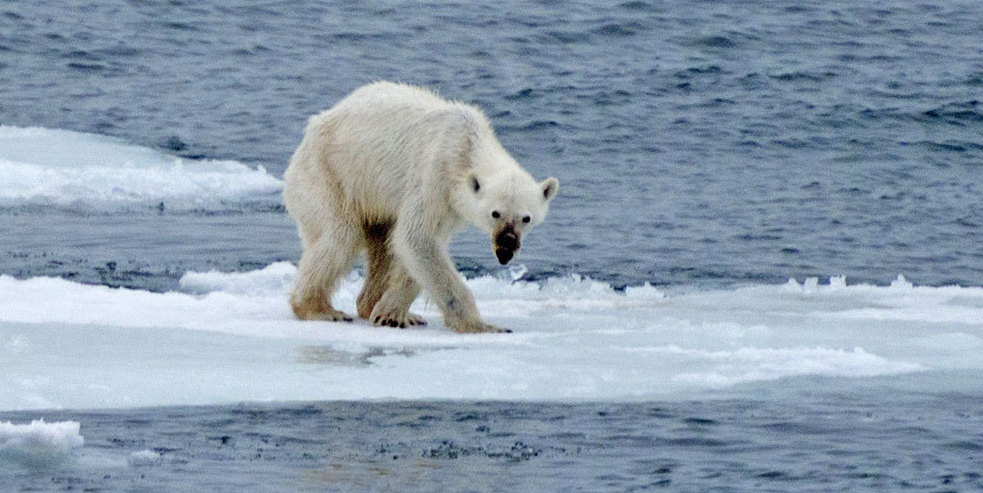Climate change is inevitable and it has changed the Earth dramatically over the past few decades. One notable effect of climate change is an increase in temperature, and although warmer winters may seem beneficial, it is affecting polar marine organisms in a devastating way. It is due to proteins that animals have developed over time in response to cold environments that they are having troubles adapting to warmer temperatures now. Protein folding and production occurs at specific temperatures, and an increase in temperature denatures these proteins. (Bowen et al 2015). This rapid increase in temperature is happening too quickly for marine organisms, such as the ice fish and polar bears, to adapt.
Notothenioid fishes, for example, have a decreased blood vessel count as well as an antifreeze-like protein that allows crystals to form in the blood to prevent it from freezing (Cziko et al 2014). Although these adaptations were once beneficial to the fishes, they now present a problem as the crystals formed during winter do not melt when temperatures rise again, and an accumulation of these crystals can be lethal (Cziko et al 2014). Warmer temperatures cause the water to lose oxygen, nutrients and, in terms of PH, become more acidic. Oxygen is more abundant in colder waters, and in addition to the low number of hemoglobin present in Antarctic fishes the increasing temperatures have made it difficult for them to gain enough oxygen to sustain themselves (Jabr 2012).
However fishes are not the only organisms being affected by climate change, as polar bears are suffering as well. Allele proteins are also changing in polar bears who have developed an increase in alopecia. Alopecia is a disease associated with degenerative health and hair loss as a response to the increase in temperature (Bowen et al 2015). “In 2012, 28% of polar bears sampled in a study in the southern Beaufort Sea region of Alaska had varying degrees of alopecia that was concomitant with reduced body condition” (Bowen 2015). Percentage of polar bears affected by alopecia has significantly risen since their last recorded study roughly 20 years prior. This is caused by genes affecting the proteins in their body; “gene transcription is the process by which information from the DNA template of a particular gene is transcribed into messenger RNA (mRNA) and eventually translate into a function protein” (Bowen 2015). The bears that have developed hair loss from alopecia have become fit for warm climates and thus reproduce more often than those without it. This is a concern as the bears are passing on a disease, not an adaptation; this is making it harder for them to adjust to temperatures because they are not acquiring beneficial genes. The proteins that code for healthy genes in bears are becoming a disadvantage, and are making it difficult for healthy populations of polar bears to survive in warm temperatures.
In conclusion, the rapid incline of temperatures in the arctic have some organisms struggling in an attempt to adapt positively. “The Antarctic icefishes (Family Channichthyidae) provide excellent examples of unique traits that can arise in a chronically cold and isolated environment” (Sidell et al 2006). However, as the conditions become warmer the ice fishes’ antifreeze and hemoglobin protein adaptation to cold weather becomes a life threatening process. The DNA of polar bears being turned into proteins has developed a disease of alopecia and is tactlessly transferring disruptive health genes on. These adaptations are causing more problems and are not protecting them from extinction.
References
Bowen L, Keith M A, Stott J, Waters S & Atwood T. 2015. Enhanced biological processes associated with alopecia in polar bears(Ursus maritimus). Sci Total Env [Internet]. [cited 2016 Feb 14]; 529: 114-120. Available from: http://www.sciencedirect.com/science/article/pii/S0048969715300978
doi: 10.1016/j.scitotenv.2015.05.039
Cziko P A, DeVries A L, Evans C W & Cheng C-H C. 2014. Antifreeze protein-induced superheating of ice inside Antarctic Notothenioid fishes inhibits melting during summer warming [Internet]. [cited 2016 Feb 12]; 111(40): 14583–14588. Available from: http://www.pnas.org/content/111/40/14583.full.pdf doi: 10.1073/pnas.1410256111
Jabr F. [Internet]. 2012. How the Antarctic icefish lost its red blood cells but survived anyway.Sci Am. [updated August 3, 2012; cited 2016 Feb 12] Available from: https://blogs.scientificamerican.com/brainwaves/how-the-antarctic-icefish-lost-its-red- blood-cells-but-survived-anyway/
Sidell BD, O’Brien KM. 2006. When bad things happen to good fish: the loss of hemoglobin and myoglobin expression in Antarctic icefishes [Internet]. [cited 2016 Mar 7]; 209: 1791-1802. Available from: http://jeb.biologists.org/content/jexbio/209/10/1791.full.pdf doi: 10.1242/jeb.02091
